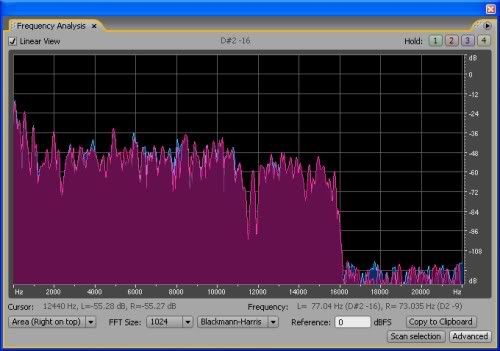elbandito
potential lunch winner
I find myself fascinated by the concepts of sound directionality and its relation to the inverse square rule. Now, I'm fairly described as a beginner in the field of audio, so please correct me where I'm wrong and let's have a geeky conversation!
As i understand, sound is at its most directional in the high frequencies. To me, this means that when placing mics for recording, we must pay closest attention to things like cymbals when trying to mic a room - especially when using mics with severe off-axis coloration.
Further, the inverse square rule says that in ideal conditions, sound intensity drops 6 dB (half the volume) every time the distance is doubled, and conversely, the volume doubles as the distance is halved. This implies to me that, as relates to directionality, frequencies will become more or less directional based on their distance from the mic. This would be why close micing techniques become so important sometimes - especially in bad sounding rooms, where reflections can bounce back into a microphone.
I don't really know much more than this, unfortunately and i don't have any leading questions ATM to further this discussion but I'm hoping that somebody will pick this topic up and share some info while I'm off reading about this topic some more. There's got to be some closet geeks lurking about this place!
As i understand, sound is at its most directional in the high frequencies. To me, this means that when placing mics for recording, we must pay closest attention to things like cymbals when trying to mic a room - especially when using mics with severe off-axis coloration.
Further, the inverse square rule says that in ideal conditions, sound intensity drops 6 dB (half the volume) every time the distance is doubled, and conversely, the volume doubles as the distance is halved. This implies to me that, as relates to directionality, frequencies will become more or less directional based on their distance from the mic. This would be why close micing techniques become so important sometimes - especially in bad sounding rooms, where reflections can bounce back into a microphone.
I don't really know much more than this, unfortunately and i don't have any leading questions ATM to further this discussion but I'm hoping that somebody will pick this topic up and share some info while I'm off reading about this topic some more. There's got to be some closet geeks lurking about this place!


 ) and the reflection level about matches the direct sound. Then it stays about the same anywhere in the room. (We in a room?
) and the reflection level about matches the direct sound. Then it stays about the same anywhere in the room. (We in a room? 


